AMD Radeon HD 4850 512MB Video Card Preview – Sapphire
The AMD/ATI Presentation Slides
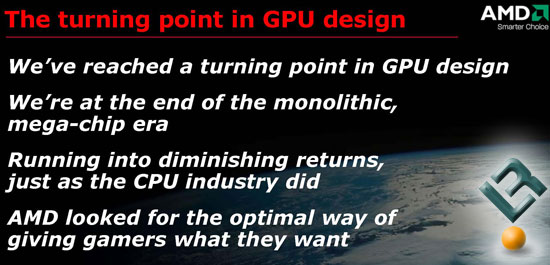
AMD says that we are at the end of the monolithic, mega-chip era and that the entire industry is running into diminishing returns, just like the CPU industry did. Our sources outside of NVIDIA and AMD/ATI informed us that the just released GeForce GTX 280 has some really small yield numbers. If you read our article on the GeForce GTX 280 video card you should recall that just over 90 GT200 cores are produced per wafer. Our sources informed us that the wafer costs roughly $5000 to produce and only 40% of the dies actually meet the requirements to become a GeForce GTX 280 chip. This puts the raw cost per GPU at nearly $140 per die before packaging if this is true. This pushes up card prices and the fall out is high as you can imagine.
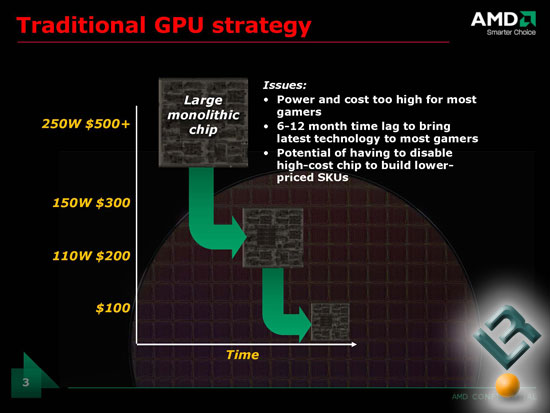
AMD hits on this subject different than the example we just gave you, but the point they are trying to make is the same. The large monolithic chip takes longer to design, consumes more power and costs more to produce
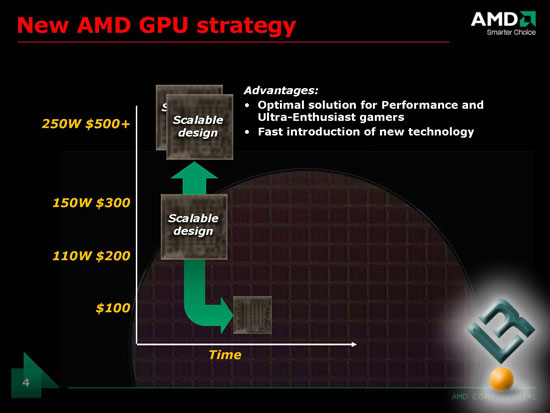
AMD is now taking the approach of quantity over size as it keeps costs down and means they can be produced faster.
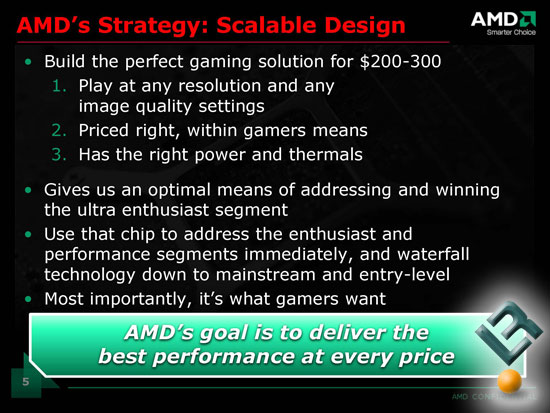
Here AMD shows what they hope to get from scalable designs and claim that it’s what gamers want. We’re not too sure if that is true, but remember these are marketing slides.
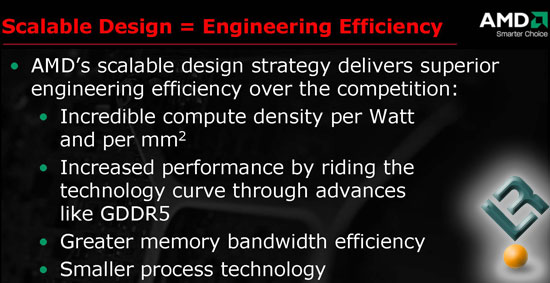
Here they talk about Engineering Efficiency and introduce advanced memory technology with the likes of GDDR5, but that isn’t on the Radeon HD 4850 graphics card. AMD has implimented GDDR5 on the unreleased and unannounced ATI Radeon HD 4870 graphics cards. The ATI Radeon HD 4850 uses GDDR3 memory, which helps keep costs down as the ICs are cheaper and the PCB uses far less layers.

Comments are closed.